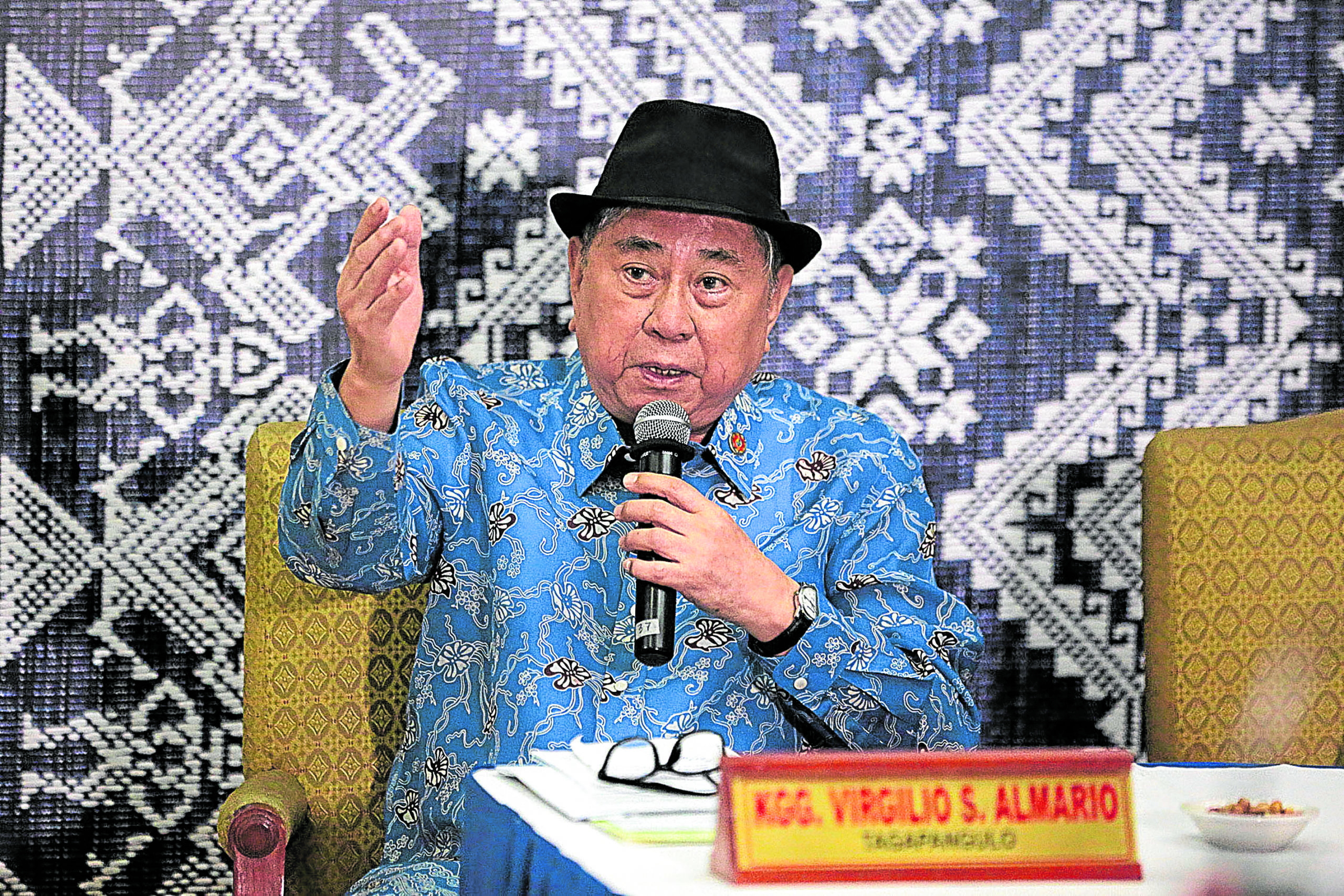
For National Artist for Literature Virgilio Almario, it was time to free the verses.
After the end of his term as chair of the National Commission for Culture and the Arts and the Komisyon sa Wikang Filipino earlier this year, he mulled over what literary projects to undertake especially since April, National Literature Month, was just around the corner. He was in Tuguegarao for the National Schools Press Conference when the enhanced community quarantine (ECQ) was declared, and all of his plans were effectively derailed.
Save one.
“Hinarap ko ang tula. Ito ang nasakripisyo sa loob ng pitong taon ko sa gobyerno (I faced the poetry. This was what I sacrificed in my seven years in government),” the poet with the pen name “Rio Alma” said.
The 76-year-old Almario noted that fellow writers Ed Maranan, Rogelio Mangahas and National Artist for Literature Cirilo Bautista had died over the last years. He then decided he needed to focus on a collection of poetry called “Dayatan,” which refers to the second time for planting. These poems would be about: “kamatayan, old age, taglagas, at kung sakali ay muling pagkabuhay, metamorposis, pangwakas na alay sa Musa,” among other subjects.
After returning to Manila from Cagayan, Almario was supposed to speak during International Poetry Day on March 21, which was of course eventually canceled. But he did manage to finish a poem called “Tatlo sa Harap ng Covid-19” (new coronavirus disease), which he posted on his Facebook page. The poem caught the attention of Rappler.com, which posted the poem with his permission. The poem wound up getting repeatedly shared and reposted.
This gave Almario an idea: Why not post a poem every day to call on other poets to use their poetry to contribute during the crisis and to encourage the public to read more poetry. “Naisip ko kasi na baka ito ang pagkakataon para ipakita sa mga tao na ang tula ay puwede nilang basahin kaugnay ng kanilang buhay at sa paraang madali nilang maintindihan,” he said.
Accessible, topical
He wrote 41 poems from March 22 to April 18—and plans on writing more—posting one every day on his Facebook account. He wanted to make his poetry accessible and topical, to reengage the public through poetic discourse.
Most important, he wrote about the people and things he felt needed to be remembered, such as how the virus exposed the weakness of institutions.
“May COVID ang buong burukrasya,” he said, noting that the strength came from the unsung heroes. “Ang mga papuri at oda ko sa mga front-liner at doktor na nasawi sa digmaang ito ay mula sa puso,” he said.
Almario has several poems about front-liners as well as everyday heroes such as janitors and garbage collectors (“Oda sa Kalinisan”). The verses are tinged with ironic playfulness but armed with an alert self-awareness, intended to promote Filipino virtues (“bertud”) notably through native poetic forms such as the tanaga, dalit, diyona, oyayi and kantahing bayan, among others. These poems change shape, attach themselves to different topics and demand to be tested.
In “May Bagong Bayani ang Ating Panahon,” he writes: “Sinlinis ng apoy, sinsipag ng batis,/ Paglilingkod nilá’y higit sa bantayog;/ Sila ang bayaning anumang panganib/ Titindig hahandog búhay ma’y marupok.” Almario names as many actual doctors who had died fighting the virus at the end of the poem.
Mortality
He faces down the fear of mortality in “Kamatayan Ka Lamang (Hinango Mula sa Alaala ni Pasyente 2828)”: “Gayon ka, walang hudyat:/ Pitik ng kampanilya,/ Bulong ng simoy,/ Kilapsaw ng gagambang gumagapang sa tubigan,/ Sakâ katahimikang ganap at walang-hanggan.// Ngunit kamatayan ka lámang.”
The poem is based on the experience of journalist Howie Severino, who had struggled with but recovered from COVID-19.
Almario describes a nightmare scenario in “Lockdown: Isang Resume”: “Sementeryong lungsod, ang amoy ng ataul, maaaring umapaw ang amoy ng ataul sa mga abenida’t parke,… Walang punebre, tulad ng kilo-kilong salot at mikrobyong pinupuksa maghápon ng araw… Wika ng alamat, pagkatápos ng peste, panahon naman ng uwak. Paano mauuntol ang sanlaksang kumakaway na panyo at daloy ng mga bagahe ng pamamaalam sa mga paliparan at daungan?”
He assails the inequity of food and health care in “Retrato ng Isang Trapo”: “At siyanga palá, magreserba ng beds/ Sa ICU, sakâ ibiling unahin/ Ang pamilya ni Tsong. Gusto ko nang magrest./ Hindi hayop, hindi tao,/ Kung di vayrus, pesteng trapo.”
Almario writes evocatively and grimly in “Alamat ng Pasyente”: Maraming dapat ibunyag ang maitim na musika:/ May anak na nag-aaral;/ Pang-ospital;/ Politika;/ Dumarating ang kartero’t walang liham.// Paano kung iniligáw ng karimlan/ Ang hiniling, at di ito ang nais na mang-aawit?/ Nása gitna na ang lahat./ Hinihintay/ Lang ang anghel na pupugto sa maitim na tugtugin.”He does find hope in the beautiful “Alamat ng Bituing Marikit,” taking comfort in the idea of a loved one despite distance and separation: “Bituing Marikit, sa gabi ng búhay,/ Ang bawat kislap mo kundiman ang taglay:/ Kundimang may tamis na ikaw’y matanaw,/ Kundimang may luha ng pagkahiwalay.// Huwag kang pipikit kahit tumatangis,/ Ilaw ka’t pag-asa sa gabing masungit;/ Kung tinatanaw ka, Bituing Marikit,/ Ang bawat iluha’y tapat na pag-ibig.”
He plans to collect the poems he will write during this period of time and publish them as a collection once the ECQ is over, with, in his words, “ang iba ko pang tula na hindi ko nai-post dahil sa ilang pampolitika at estetikong dahilan.”
The ECQ has become an extremely productive time for the National Artist as he writes more than one poem—sometimes even three—in a day. The time had come for Virgilio Almario to poetically unleash the demons in his head: “Ang ibig lang sabihin, sobra ako sa sipag tumula ngayon—biglang nakawala ang demonyo sa batok ko.” INQYou can read his poems on his personal Facebook page (Virgilio Senadren Almario) or his Rio Alma page.













































